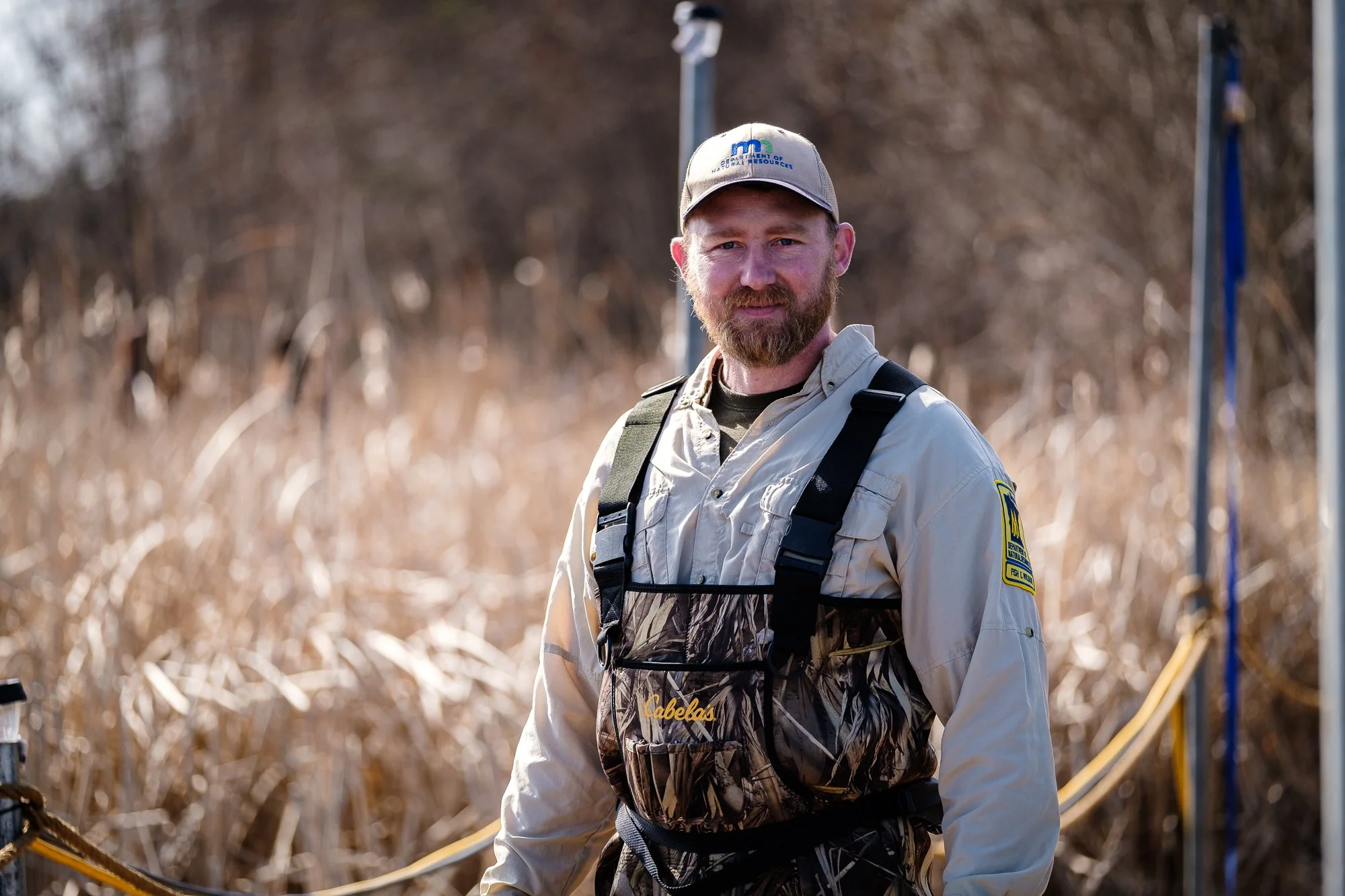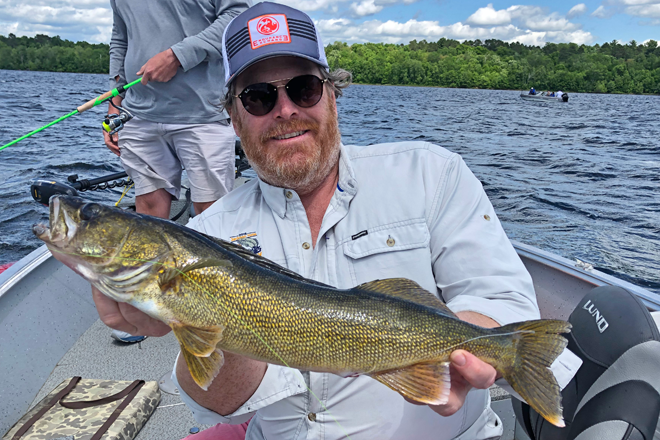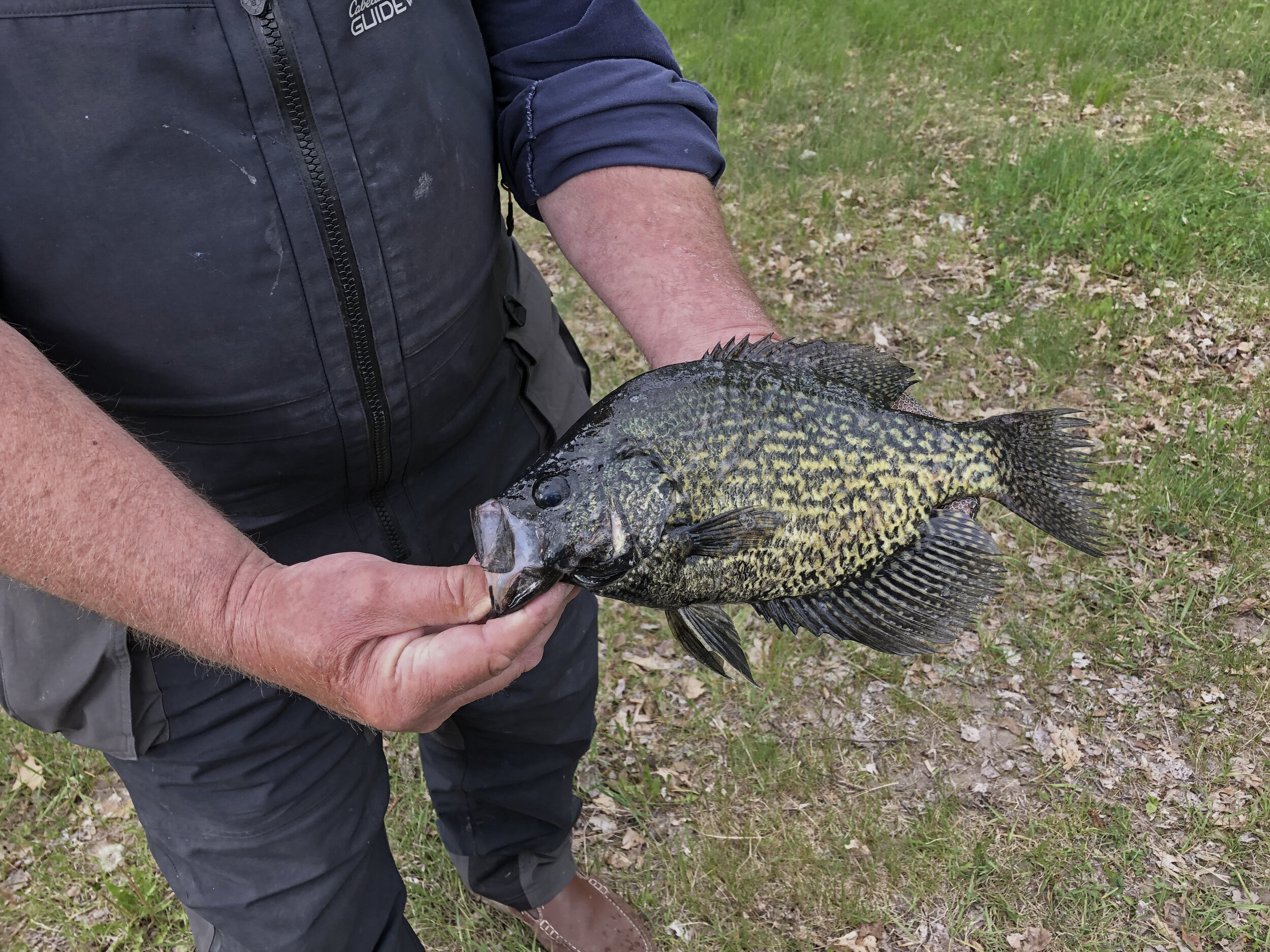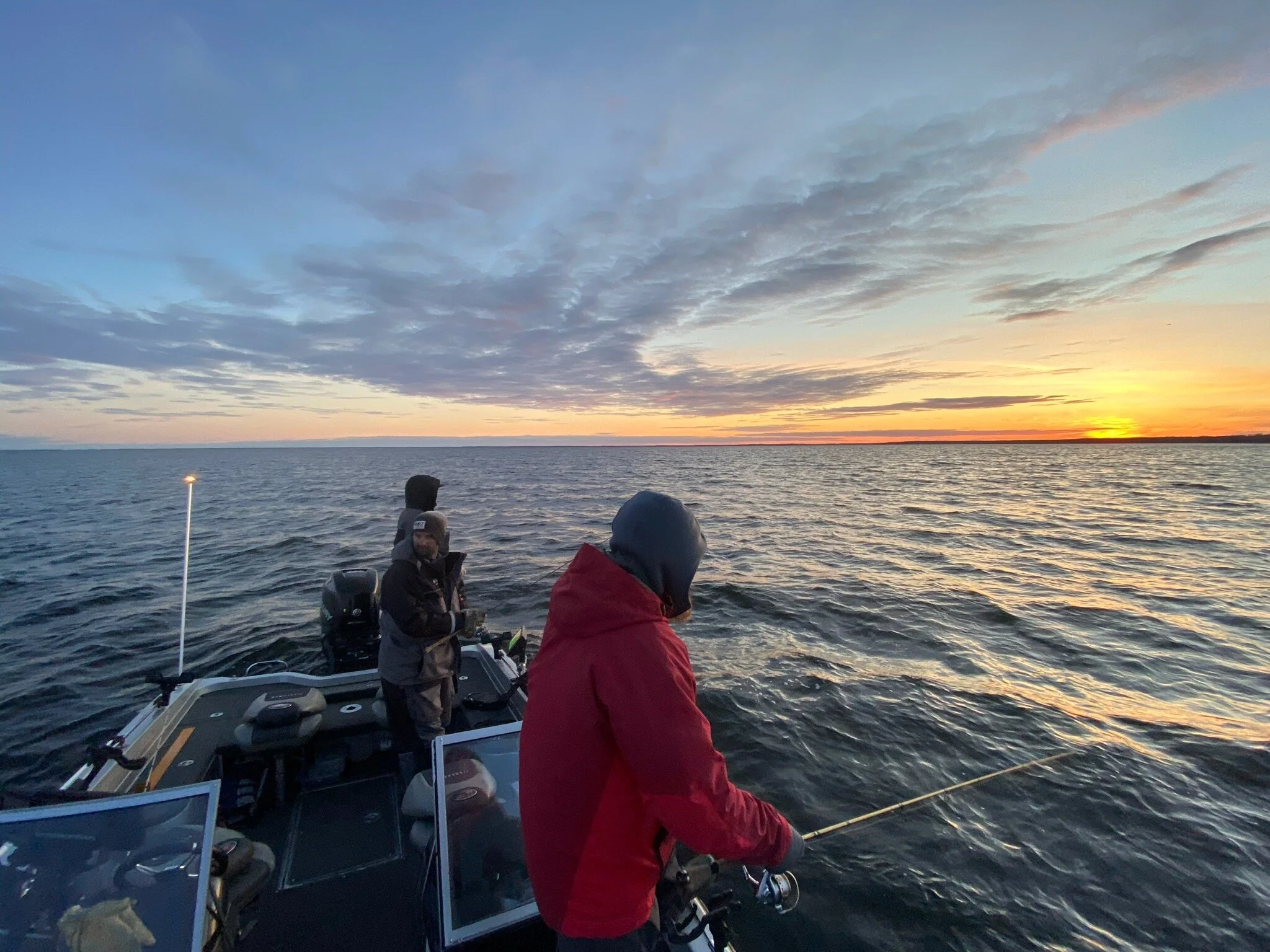The fishing action on both Cutfoot and Winnie has been consistent. There aren’t many who return to the docks without reporting good, mixed bag catches of walleye, pike and perch. There have been some good catches of crappie and panfish as well.
Walleye in the 15 to 17 inch range continue to be at a premium, but since fish have begun migrating toward the mid-lake bars on the big lake, we’ve had numerous reports of large walleye being caught. Many folks are catching and have opted to harvest fish over the protected 18 to 23 inch protected slot size.
We don’t discourage harvest of these larger fish, but do feel obliged to remind our guests about an important detail that is often overlooked. Our friendly reminder is that the legal possession limit for walleye over 23 inches is 1 fish. It is not okay to harvest another “over” until after you have consumed any other one that was preciously in your possession.
Reports about catching good numbers of small walleyes from the 2018 year class have been too numerous to mention. Most of these fish remain too small to interest our guests, but the growth rate in Winnie and Cutfoot is incredible and these fish are growing fast.
One of the area guides was fishing Cutfoot last week and reported catching several fish in the 13 to 13-1/2 inch range, along with one fish that crossed the 14 inch line of his ruler. These were a little larger than the fish he’d been catching on the big lake; those fish have been ranging between 11 and 13 inches. Given Winnie’s super-charged growth rate, these fish will be of interest to anglers in the 2021 season.
Presentations for walleye vary by location and depth. Guests who prefer to pursue mixed bags are sticking with shoreline breaks in water depths of 10 to 14 feet, using jig and minnow combinations. There are plenty of walleye along with bonus pike and perch, all 3 species will grab the jigs and minnows. Use 1/8 ounce sizes for starters, move up to ¼ ounce on windy days or when the fish are holding along the deeper portions of the breakline.
Walleye purists have gotten serious about Lindy Rigs tipped with live leeches and night crawlers. These have been the standard for many who fish the bars and humps on Winnie. Long, 6 to 10 foot leaders are helpful; rig them with light weight #6 hooks and use only the liveliest leeches for maximum floating power. When using night crawlers, use a worm blower to inject a small bubble of air into the worm, this will help float the worm higher into the strike-zone.
Key depths on mid-lake structures vary with weather conditions. Clouds and wind encourage fish to move up into the 16 to 20 foot range. Clear skies and calm seas can send them deeper, 24 to 28 feet has been a common holding depth.
Perch are moving deeper too, feeding on emerging insect hatches that occur in soft bottom areas adjacent to mid-lake structure. Jig and minnow, Lindy Rigs and minnows and spinners behind bottom bouncers are all good ways to attract them. Follow the deep breaklines at 26 to 30 feet to encounter schools of feeding fish.
Pike are wherever we find them these days. Obviously, cabbage weeds are good, but there are lots of these fish using rock structures and deep breaklines too. Folks who are interested in harvesting some pike for dinner should not have much trouble finding them.
The stormy, breezy weather has been hard on crappie and panfish anglers. We believe that crappies have moved off of any spawning beds that they previously occupied. Sunfish may or may not be on beds right now, there have been reports of them being caught in the deeper cabbage weeds along with crappies.
One good way to find out is by casting small spinner jigs, like a Beetle Spin into the gaps and pockets in the vegetation. Use 1/16 to 1/8 ounce lures and fish them using a swim-drop-swim-drop retrieve. When you see a nice hole in the cabbage, let the lure fall into it and watch your line, if you see a “tick”, set the hook.
We haven’t heard much about bass or musky yet, but as the water warms, some of our guests will begin to pursue them. Check back for updates next week.
We all know how crazy the situation has been this season, so it won’t surprise you to learn that we’ve had a few cancellations. So there may be an opening for an UN-planned vacation this summer. If your family feels like getting out of the house, but don’t have a vacation already on your calendar, give us a call. Maybe this is the summer that we should get to know each other.












